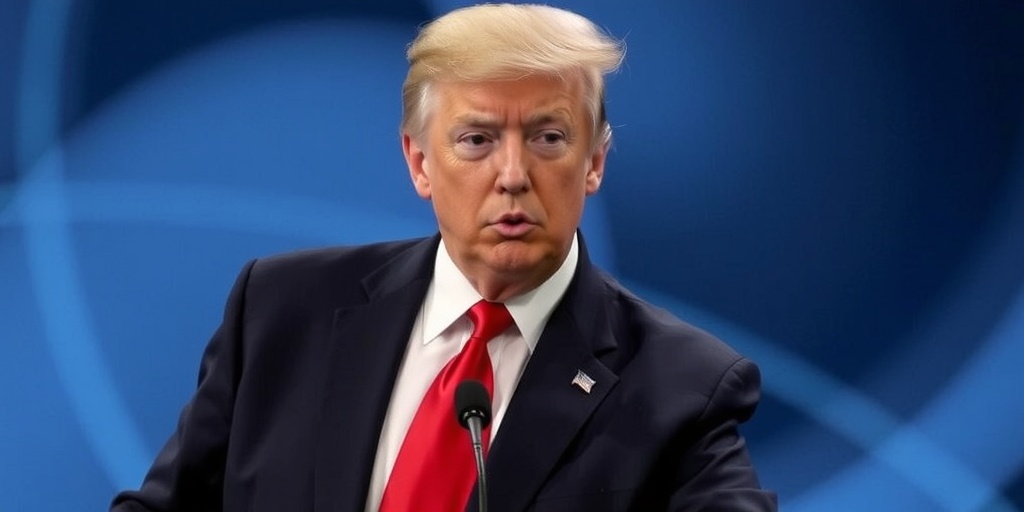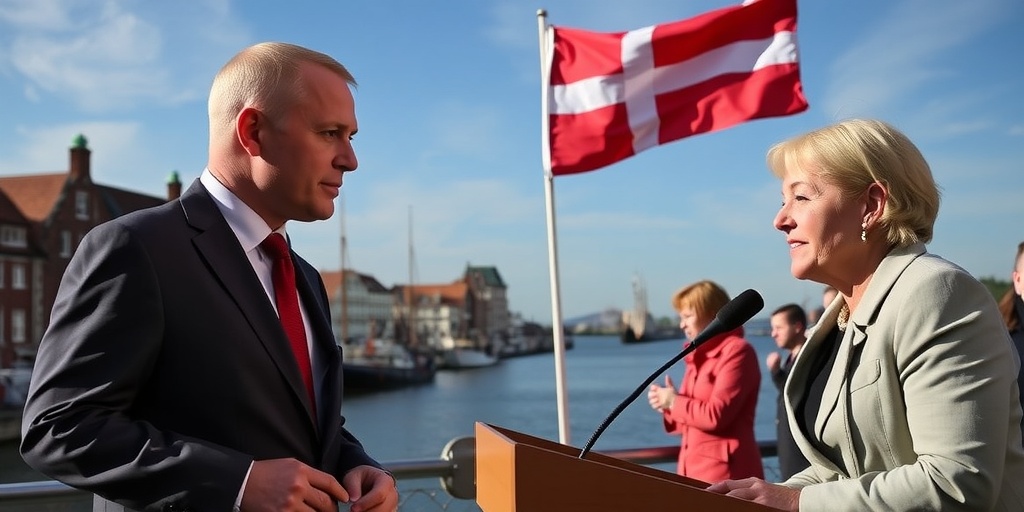Now Reading: Trump Increases Metal Tariffs, Urges Canada to Join U.S.
-
01
Trump Increases Metal Tariffs, Urges Canada to Join U.S.
Trump Increases Metal Tariffs, Urges Canada to Join U.S.

Trump’s Tariff Threats Against Canada Escalate Tensions
In an alarming escalation of trade tensions, President Donald Trump announced on Tuesday that he would implement a dramatic increase in tariffs on steel and aluminum imports from Canada. The tariffs, set to reach a staggering 50 percent, are double the rates he plans to impose on metals from other countries starting Wednesday. This proclamation has introduced a wave of concern across financial markets, with the S&P 500 experiencing a decline of approximately 1 percent in early trading.
The impetus behind Trump’s decision stems from a recent surcharge imposed by Ontario, Canada’s most populous province, on electricity exports to the United States. In a post on his social media platform, the president expressed his frustration, asserting that the tariffs would be a direct response to this surcharge. Furthermore, he took the opportunity to criticize Canada’s existing levies on U.S. dairy and agricultural products, indicating that he would not hesitate to implement more tariffs if these issues remained unresolved.
“If other egregious, long-time tariffs are not likewise dropped by Canada, I will substantially increase, on April 2nd, the tariffs on cars coming into the U.S. which will, essentially, permanently shut down the automobile manufacturing business in Canada,” Trump warned ominously.
This strong rhetoric signals a significant deterioration of relations with one of America’s closest allies. Canadian officials initially dismissed Trump’s suggestion that Canada should voluntarily merge with the United States as a mere joke. However, following his recent threats, they have begun to take these proclamations more seriously.
Trump further articulated his vision for Canada in his social media post, proposing that the country should become the 51st state of the U.S. “This would make all tariffs, and everything else, totally disappear,” he claimed. The president elaborated that Canadians would enjoy significantly lower taxes, enhanced security—both militarily and otherwise—and a dissolution of any “Northern Border problem.” He painted an idyllic picture where the merger would make America “bigger, better, and stronger than ever.”
Furthermore, the president emphasized that the “artificial line of separation drawn many years ago will finally disappear,” heralding a new era of unity between the two nations.
In a move that only intensifies the confrontational atmosphere, Trump has prepared to impose sweeping tariffs on a range of goods, with 25 percent tariffs already introduced on all imports from Mexico and Canada. While he later walked back some of these tariffs, the impact on both sides of the border has been palpable.
The backdrop for these developments is a significant political transition in Canada. The nation is set to welcome new Prime Minister Mark Carney, an economist and central banker who will replace Justin Trudeau, who announced his resignation after almost a decade in power. As Canada navigates this transition, Trump’s new tariffs threaten to inject even more uncertainty into an already fragile political climate.
Ontario’s recent retort to Trump’s tariffs further complicates the landscape. In retaliation for the anticipated U.S. tariffs, Ontario announced a 25 percent surcharge on electricity exported to Michigan, Minnesota, and New York. This measure underscores the interconnectedness of the two economies and the potential fallout from escalating trade hostilities.
Critics argue that Trump’s tariff strategy could lead to retaliatory measures that would harm U.S. industries reliant on Canadian imports, particularly in the automotive and manufacturing sectors. The implications of such a trade war could extend far beyond the immediate economic ramifications, potentially straining diplomatic relations that have historically been strong between the United States and Canada.
Moreover, approaching deadlines for new tariffs may raise tensions further as various industries scramble to adapt to the changing trade landscape. Notably, by April 2nd, Trump plans to impose unspecified tariffs on foreign agricultural products and cars, a measure that could profoundly affect U.S. consumers and businesses that rely on a stable supply of these goods.
As Canada prepares to respond to these developments, the looming threat of increased tariffs introduces significant uncertainty into the bilateral trade relationship. Amidst all this, it remains to be seen how Canadian officials will navigate these threats and whether dialogue can de-escalate the situation.
Overall, the unfolding scenario raises pressing questions about the future of North American trade and cooperation, as both nations grapple with the potential consequences of Trump’s aggressive tariff policies. With the stakes seemingly higher than ever, the economic and political landscape of North America is poised for significant shifts in the coming weeks.
Stay Informed With the Latest & Most Important News
Previous Post
Next Post
-
 01New technology breakthrough has everyone talking right now
01New technology breakthrough has everyone talking right now -
 02Unbelievable life hack everyone needs to try today
02Unbelievable life hack everyone needs to try today -
 03Fascinating discovery found buried deep beneath the ocean
03Fascinating discovery found buried deep beneath the ocean -
 04Man invents genius device that solves everyday problems
04Man invents genius device that solves everyday problems -
 05Shocking discovery that changes what we know forever
05Shocking discovery that changes what we know forever -
 06Internet goes wild over celebrity’s unexpected fashion choice
06Internet goes wild over celebrity’s unexpected fashion choice -
 07Rare animal sighting stuns scientists and wildlife lovers
07Rare animal sighting stuns scientists and wildlife lovers




















